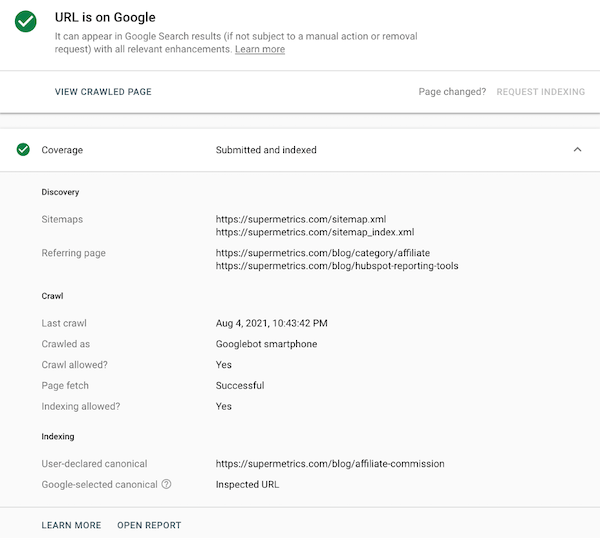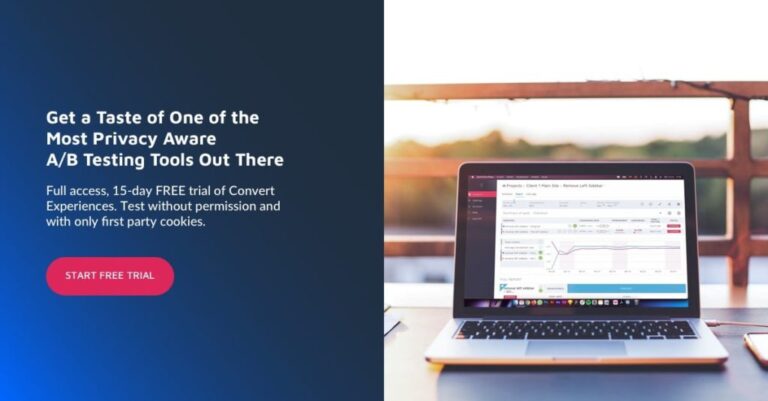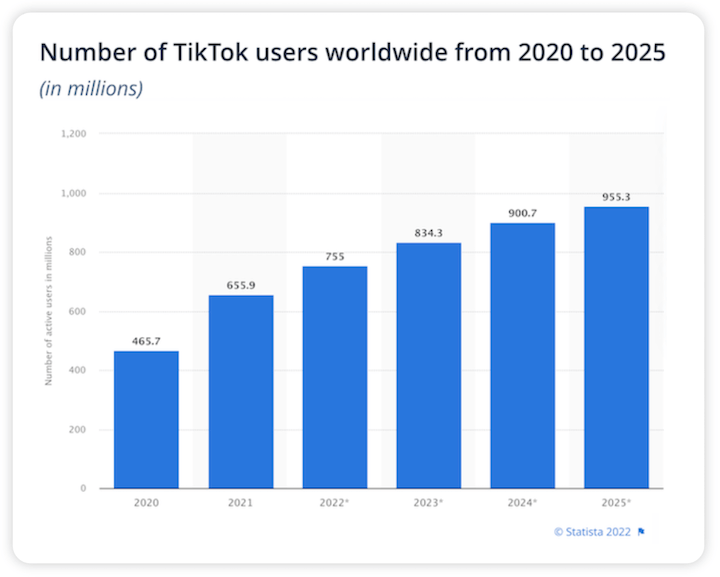Curious how your creative is performing? The new “Ads & assets” menu provides reporting for all of the assets across your account. You’ll see headlines and descriptions in the “Asset” table view, while the “Association” table view will show information like images and prices.
What is Google Performance Max?
Building on the culinary example above, think of building out your asset group as packing a lunch, except the lunch is for Google. In each asset group you’ll want to pack a nice selection of images, videos, headlines, logos, and other textual elements. The higher-quality assets you feed Google, the better your ads will look.
If you want to take back some control, you can toggle OFF the URL expansion. This will send your search ad traffic to the final URLs you submit within your asset groups.
We’re of the belief that if you are going to test Performance Max you should lean in, and not try to make this campaign something it was never meant to be. There are tutorials online for finagling a Performance Max campaign to be a Search campaign, or a Shopping campaign, and time can be better spent focusing on how to best leverage a campaign that was designed by its very nature to bring all of that together.
Now that we’ve established best practices, let’s explore some optimization tips from the experts…
- Google Shopping
- Google Search Network
- Google Display Network
- YouTube
- Discover
- Gmail
- Google Maps
“Just as I did on Smart Shopping, I always have a branded and non-branded shopping campaign running in the background. You can maintain your branded coverage pretty heavily through a Standard campaign, and also use an upper-funnel non-branded campaign to harvest search term data and trend. I wouldn’t rely on those campaigns for high conversions; it’s more so for coverage.
This gives us a chance to say, for example: “ We’ve noticed mens’ sweaters trending the last 14 days, so we’re going to push harder on PMax.” I think you should still run a Standard in the background as well, though.”
Highlights of Performance Max
“One of our clients launched a sub-brand for which they wanted to get some exposure and traffic to the site. Because we weren’t using any of those URLs in our Standard campaigns, running them through Performance Max was a perfect fit, with no self-cannibalization risk. We gave it a unique product feed so it only featured things we weren’t already talking about or bidding on.
The campaign itself was an easy-lift that didn’t require a robust campaign build-out that reaching all those channels through Standard campaigns would require. This makes Performance Max ideal for a variety of scenarios, including tentpole initiatives, or advertising areas of the business you might not have before.”
You can also review the Combinations report, which gives you a view of assets like sitelinks, callouts, and images alongside your headlines and descriptions. With this view, it will be easier to review and make informed decisions about your creative as a whole.
Reach customers across the full Google Ads network efficiently
The first reaction when coming up with a strategy is a one-campaign-to-one-asset-group ratio; this ensures that the conversions you are seeing at the campaign level are 1:1 with the asset level. For example, if you create a ‘womens’ winter jackets’ campaign, you will know exactly how that segment performs versus grouping it into a larger womens’ jackets campaign.
Find customers that are ready to convert with AI-driven optimization
While many advertisers aren’t keen on giving up the levers they’re accustomed to pulling, we know that Google is investing a lot of manpower and engineering hours to make these campaigns succeed.
A different look to insights
Google has also launched new tools aiming to make collaboration and ad creation easier. The asset library gives advertisers the opportunity to view, import, and organize creative assets so that when the time comes to create a new campaign, there is no need to re-upload assets. With assets in your library, you can then create high-quality videos in minutes with Google’s video ad creation tool. If you do not want to go the Google Ads route, Tinuiti can develop creative for you.
However, there is a delicate balance—being too segmented will make data limited, while making it more difficult for Google to optimize. Conversely, being too high-level will give you limited insight into how sub-categories are performing. The need to find the appropriate strategic balance to realize the greatest outcome is one of the reasons why you should work closely with internal and external stakeholders to decide what to run through PMax, and what other considerations need to be made.
— Courtney O’Donnell, Sr. Director of Shoppable Media at Tinuiti
Best Practices when Setting Up a Performance Max Campaign
Google Smart Shopping and Local campaigns are also being upgraded to Performance Max campaigns, granting retailers and local marketers access to ad inventory, formats, and automation insights that weren’t previously available for those campaign types.
Give Performance Max campaigns freedom to function as intended
We all know the customer journey is rarely linear; shoppers move between many different channels, and rely on various resources, when deciding what to purchase. Performance Max campaigns are designed to reach shoppers that are most likely to convert, on whichever channel they’re seeing your ad across Google platforms.
Implement audience signals to set automated targeting up for speedy success
Source
The chart below shows the impact of Performance Max on your Search campaigns in the auction.
To choose or not to choose your final URL expansion—that is the question! And the decision is 100% yours to make. That said, by default Performance Max campaigns are set to allow Google to define the final URL.
- Remarketing
- Custom Audiences
- Customer Match
- Interests
- Foundational Demographics
In November 2021, Google announced their new Performance Max campaigns would be coming out of beta, making them available to advertiser accounts across the world. In this article, we’ll unpack what Google Performance Max campaigns are, how they differ from other campaign types, benefits and best practices, reporting functionality, and ad optimization tips.
Decide if you’ll use Final URL expansion
The new customer acquisition goal, available exclusively through PMax campaigns, presents an exciting opportunity for advertisers looking to target new-to-brand audiences. Using this goal, advertisers can choose from the following bidding options:
Google Performance Max campaigns are goal-based, automated campaigns that enable advertisers to promote across all Google networks from the same campaign. Google announced Performance Max campaigns in October 2020 as “a new way to buy Google ads across all our inventory.”
Want to learn more about how to best leverage Performance Max campaigns to reach your goals? Drop us a line and we’ll be in touch!
Decide whether the New Customer Acquisition goal is right for you
There is some campaign overlap on non-exact match keywords you’ll have to consider to safeguard against self-cannibalization. We recommend that for any keyword for which you’ll want to have complete control and in-depth reporting, you ensure it is an exact match keyword in Search. Also, monitor Search performance after launching to see if broad match keywords dropped off for a specific category once PMax was launched.
- New Customer Value mode: Campaigns are optimized to bid higher for new customers
- New Customer Only mode: Campaigns are optimized to only bid for new customers
Define Asset Groups
— Courtney O’Donnell, Sr. Director of Shoppable Media at Tinuiti
If you are a promotional brand, you should consider creating evergreen asset groups and promotional asset groups in order to easily shift creative between promotional and non-promotional periods.
Don’t turn off your Search campaigns
You don’t have to only run on Performance Max. Nick Jones, Growth Media Strategist at Tinuiti, explains:
Advertisers have compared Performance Max Campaigns to several other campaign types, including Smart campaigns, Social campaigns, and responsive Display campaigns. And while there are elements that bear similarity in varying ways to all of the above, it’s important to consider the functionality and benefits of this campaign type specifically.
Performance Max—or PMax, for short—is designed as a complement to your existing keyword-based Search, Shopping and fully-automated campaigns, building on learnings from the latter “to deliver a comprehensive solution that works for all advertisers across a wider range of marketing objectives.”
Consider brand safety
“The Insights piece is a shift from what we have been accustomed to; one would even say it’s a black box as far as understanding what’s going on per channel. Performance Max aims to look at things holistically—client gives you X budget, and here is X ROI across the funnel. This makes it impossible to say, for example, “upper funnel ads are showing a bad return, let’s turn them off.” Also, the Asset report only ranks assets by good, low, and best, and doesn’t give you insight into callouts like CTR and CVRs. Trusting in Performance Max to do its thing with the signals you give it, and shifting the way we analyze performance, is the biggest hurdle with the new campaign type.”
Expert Tips to Optimize Google Performance Max Ad Campaigns
The lack of control over what ads will show where, and with which creative, is what makes many brands nervous about Performance Max campaigns. That said, despite it being true that there is less control overall, you can run a placement report, sort destinations by impression volume (unfortunately you cannot see spend by placement) and then exclude any sites you don’t want to show ads on. Exclusions are set at the account level.
Focus on a category or service type breakout first
We recommend that advertisers start with a specific segment of their business before launching across the entire account. If you are currently running Shopping campaigns, test a specific Shopping campaign against a Performance Max campaign.
“There is not a one-size-fits-all approach to Performance Max, and I recommend working closely with your advertiser on the best strategy based on your goals. We’re seeing Google regularly enhance Performance Max campaigns, so I’m excited to see what new features will roll out next. This July, four new features were added: seasonality adjustments, data exclusions, explanations, and optimization score. It’s ever-evolving that way, and the Performance Max campaigns we’re building today may look very different from those we’ll be running in just a few short months.”
As Performance Max does not require the same level of manual optimization, Google had to rethink what and how they provide data. That said, while you won’t get the reporting you’re used to, over time you will start to see information including auction and audience insights, performance drivers, consumer interests, and search trends.
If you want to give Google even more control with Performance Max campaigns, similar to dynamic search ad campaigns, you can allow them to choose the landing page URLs for each of your ads. LP exclusions are available if there are specific pages you never want used; these can include exclusions based on URL parameters (ex. blocking a full sub-folder) or individual landing pages.
Performance Max is designed to complement your existing Search campaigns, not replace them.
With an overarching goal of efficient campaign performance, Google considers all available creative assets when crafting the ad, ultimately showing what it believes will be the most likely combination to convert on whichever of their channels that particular ad will be served.
Raid your own creative closet and leverage Google’s new tools
Think of audience signals as customer personas that Performance Max uses as your ideal shopper, functioning similarly to lookalike audiences on social platforms. This won’t be the only customer type that your campaign reaches, rather it will be the foundational core upon which other audiences are built—your seed audience.
This means that your ads can reach potential customers from a single campaign type across the following channels:
Kelsey Fortner, Director of Paid Search at Tinuiti, shares one way her team leveraged Performance Max campaigns for a client:
“Performance Max campaigns have proven valuable for the majority of clients I’ve tested them with. I would estimate that 90% are successful. When it is working, great! The issue comes in when a Performance Max campaign isn’t performing. Not only do you have less granular insights than you would with a standard campaign, but you also have fewer levers to pull.
As more data, tests, and verticals have come through, I’ve had to poke more holes in the numbers, and it’s harder to know what to do next when it isn’t working. So we start testing from a structural perspective, asking ourselves questions to inform testing, then testing to figure out what sticks.”
Because you can create multiple audience signals, we recommend experimenting with different signals to see how each performs. Consider including the following:
Consider Performance Max for sub-brands, best sellers, or tentpole events
When launching a Performance Max campaign for a brand, we work together with them to comb for ad-worthy videos and images across their website and social channels. We also focus heavily on cross-channel collaboration, working with other internal teams to see how different assets are performing on their channels. Take some time to do the same, and you might be pleasantly surprised by how many gems you find already in your arsenal.
If we think of Performance Max campaigns from a culinary perspective, the advertiser provides all the ingredients (assets) and the recipe (structure), and Google automation does the cooking (ad creation) and serving (delivering the ad to the potential customer).
Take a hybrid approach
There are numerous ways to test out Performance Max campaigns; where you should start comes down to your marketing objective, and how much granular reporting you are willing to give up.
There are numerous ways to test out Performance Max campaigns; where you should start comes down to your marketing objective, and how much granular reporting you are willing to give up.
Keep all your creative organized by breaking out thematically-similar or same-audience assets into their own asset groups, using multiple asset groups for each campaign. Asset groups help you to give Google the best array of options to choose from, while ensuring you don’t get a ‘mixed bag’ of creative for a given ad. We work with clients who bring a wide range of creative assets to the table. Some have folders full of polished, punchy, on-brand videos and photos, while others might have only a handful of existing assets at the ready. In both scenarios, you likely have more creative than you think!






